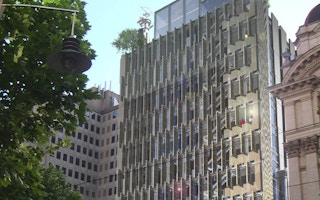The Green Building Council of Australia (GBCA) on Monday urged the federal government to green its building stock, which could raise its productivity by up to $2 billion per year.
To continue reading, subscribe to Eco‑Business.
There's something for everyone. We offer a range of subscription plans.
- Access our stories and receive our Insights Weekly newsletter with the free EB Member plan.
- Unlock unlimited access to our content and archive with EB Circle.
- Publish your content with EB Premium.
Robin Mellon, GBCA’s chief operating officer, said, “We need a government committed to visionary leadership if we are to improve Australia’s productivity and performance, and truly compete in the Asian Century.”
One way to do so is by putting federal government offices in Green Star-rated buildings or retrofitting existing areas to meet the environmental certification standards. GBCA’s call comes as the country is expected to elect its next government on Sep 7.
According to the council, Australia has several Green Star-rated buildings that have enhanced worker productivity from 10 to 15 per cent, in both public and private sectors.
For example, there is the City of Melbourne’s Council House 2, which saw an 10.9 per cent increase in productivity when staff relocated to the Green Star-rated office. The building also contributed to an estimated annual savings of $2 million, since one of its achievements from the beginning was reusing and recycling 80 per cent of the construction waste by weight. The building also uses 90 per cent of its water for landscape irrigation from an onsite rainwater collection system.
From the private sector, one example is the eco-certified headquarters of Macquarie Bank in Sydney, where some employees reported a 15 per cent increase in perceived productivity.
Mellon explained: “Even a one per cent productivity improvement – equating to just five minutes a day – can mean nearly 20 hours of additional productive working time over the course of a year. Multiply that by the hourly rate of each person and you can quickly see the returns.”
“With a federal government wages and salaries bill of $18.9 billion in the last financial year, a mere one per cent increase in productivity equates to improved performance with a dollar value of almost $200 million each year. A 10 per cent improvement, similar to that already being achieved in Green Star-rated buildings across the country, would bring the value of annual productivity improvements to nearly $2 billion,” he added.
Currently, the council has over 600 certified projects with 119 certified in the last 12 months. This means seven million-plus square metres of Green Star-rated projects translating into spaces that are energy-efficient, future-proofed and overall better for the health and welfare of office workers.
As such, Mellon emphasised, “Our federal government must ‘walk the talk’ and commit to achieving environmental ratings for all the buildings it owns, occupies and develops. This would ensure that federal government employees are working in high-performance workplaces, which maximise productivity, health and wellbeing, whilst minimising staff turnover, sickness and absenteeism.”
“As the federal election draws near, the Australian people have the right to ask which political parties will lead by example and commit to policies that outline clear targets, pathways and incremental improvements for federal government buildings – and commit to Green Star-rated outcomes which will save money and support more productive employees,” he said.










